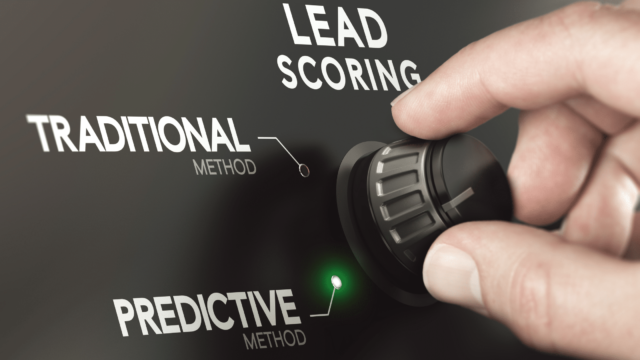In today’s competitive business landscape, effective lead scoring is essential for optimizing marketing efforts and improving conversion rates. Lead scoring helps businesses prioritize leads based on their likelihood to convert, enabling more focused and efficient marketing strategies. By leveraging digital marketing techniques, businesses can enhance their lead scoring process. Here’s a comprehensive guide on how to use digital marketing for lead scoring.

1. Understand the Basics of Lead Scoring
Lead scoring is a systematic approach to ranking prospects based on their perceived value to the business. It involves assigning numerical values to leads based on various criteria, which can include demographic information, behavioral data, and engagement levels. Understanding the basics will help you create a more effective scoring model.
2. Define Your Ideal Customer Profile (ICP)
Before implementing lead scoring, it’s crucial to define your Ideal Customer Profile (ICP). This profile should include:
- Demographic Information: Age, gender, location, job title, and industry.
- Firmographic Data: Company size, revenue, and industry type.
- Behavioral Traits: Buying patterns, engagement with your brand, and preferred communication channels.
By clearly identifying your ICP, you can tailor your lead scoring criteria to focus on prospects that align with your target audience.
3. Implement Tracking Tools
To effectively score leads, you need to track their interactions with your brand. Implement the following tracking tools:
- Web Analytics: Use tools like Google Analytics to monitor website traffic, user behavior, and conversion rates. This data helps assess how leads engage with your content.
- Marketing Automation Software: Platforms like HubSpot, Marketo, or Pardot allow you to track user interactions across various touchpoints, including emails, social media, and landing pages.
- CRM Systems: A Customer Relationship Management (CRM) system, such as Salesforce or Zoho, can help manage leads and score them based on their engagement history.
4. Assign Point Values to Lead Attributes
Once you have your tracking tools in place, assign point values to different lead attributes based on their relevance to your business. Consider the following:
- Demographic and Firmographic Data: Assign higher points to leads that match your ICP. For example, if your target audience consists of marketing managers in the tech industry, leads that fit this description should receive more points.
- Behavioral Engagement: Award points for actions that indicate interest, such as opening emails, clicking on links, downloading resources, or visiting key pages on your website.
- Negative Scoring: Implement negative scoring for behaviors that indicate lower engagement or interest, such as unsubscribing from emails or failing to respond to outreach efforts.
5. Utilize Digital Marketing Channels for Lead Generation
Leverage various digital marketing channels to attract leads that fit your scoring model:
- Content Marketing: Create high-quality, informative content that addresses the needs and pain points of your target audience. Use blog posts, whitepapers, and eBooks to capture leads.
- Social Media Marketing: Engage with potential customers on platforms like LinkedIn, Facebook, and Twitter. Share valuable content and interact with followers to drive traffic to your website.
- Email Marketing: Use targeted email campaigns to nurture leads and keep them engaged. Track opens and clicks to gather valuable behavioral data for scoring.
- Paid Advertising: Use PPC campaigns on platforms like Google Ads and social media to attract high-quality leads. Target specific demographics and interests to reach your ICP effectively.
6. Analyze Lead Data Regularly
Regular analysis of lead data is essential for refining your lead scoring model. Consider the following:
- Conversion Rates: Analyze the conversion rates of leads with different scores to determine the effectiveness of your scoring criteria.
- Lead Behavior Trends: Monitor trends in lead behavior over time. Are there specific actions or engagements that correlate with higher conversion rates?
- Feedback Loops: Encourage feedback from sales teams regarding the quality of leads generated. This can help adjust scoring criteria based on real-world outcomes.
7. Automate Your Lead Scoring Process
Automating your lead scoring process can save time and improve accuracy. Most marketing automation and CRM platforms offer built-in lead scoring features. Set up automated scoring rules based on your predefined criteria, allowing you to focus on leads that matter most.
8. Nurture High-Scoring Leads
Once leads are scored, focus on nurturing those with higher scores. Use targeted marketing strategies to engage these leads:
- Personalized Email Campaigns: Send tailored content that resonates with their interests and needs.
- Follow-Up Calls: Encourage sales teams to reach out to high-scoring leads with personalized messages.
- Exclusive Offers: Provide incentives, such as discounts or free trials, to entice high-scoring leads to convert.
Conclusion
Using digital marketing for lead scoring is an effective way to prioritize leads, improve conversion rates, and optimize marketing efforts. By defining your Ideal Customer Profile, implementing tracking tools, assigning point values to lead attributes, and regularly analyzing lead data, you can create a robust lead scoring system.


No responses yet